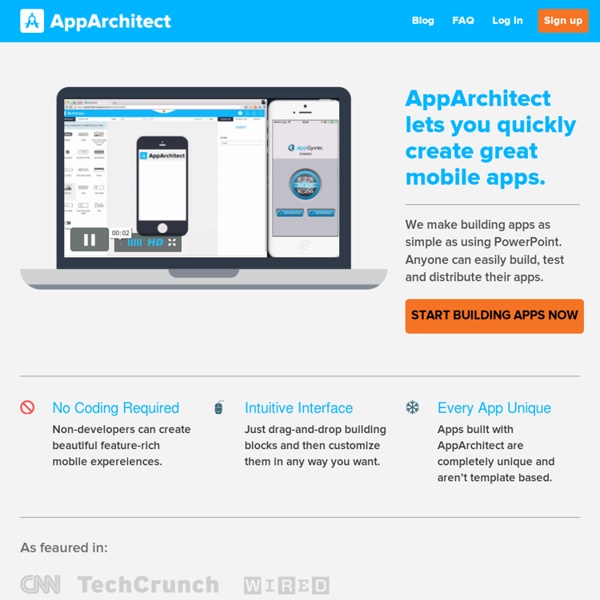



Pathmapp Launches An A/B Testing Platform For Native iOS Apps To Let Developers Optimize, Configure In Real Time A/B testing has long been a fundamental part of developing applications and products for the Web, and, with the explosion of smartphones, developers are naturally eager to use the process to test new designs and updates for mobile apps. The problem is that, traditionally, this has been tricky to manage, especially on iOS given Apple’s approval process, requiring app developers to wait weeks to push new iterations. Frustrated by the current process, Pathmapp decided to create a solution — one that would allow developers to test different designs and push them out in real time. After debuting at TechCrunch Disrupt San Francisco last year, today, the startup is officially launching an A/B testing platform for native iOS apps that aims to enable mobile developers to optimize their apps and increase conversion without making significant changes to their workflow — or to their users’ experiences. “As mobile developers, we saw this massive gap in the market,” says Pathmapp CTO Andrew Herman.
OverAPI.com | Collecting all the cheat sheets AppArchitect Lets Anyone Build iOS Apps, No Coding Or Templates Necessary Easy app creation, outside of the land of Ruby and Python, has become a huge phenomenon in the last year. And the latest company to join the fold,AppArchitect, is launching straight from our Disrupt NY stage. AppArchitect lets you build custom iPhone and iPad apps using a simple drag-and-drop interface. That’s right — you need zero coding experience to build your own iPhone app. Once you log in to the AppArchitect system, you’ll be asked whether you want to make an iPad or iPhone app. From there, you can test and review your app before submitting it to the App Store for approval. According to co-founder Ilya Zatulovskiy, AppArchitect is unique within the competitive landscape because the app gives you the option to do your own thing, without any templates to get in the way. In fact, one of the few apps you probably couldn’t build within the platform would be a game. The idea for AppArchitect started at the TechCrunch Disrupt Hackathon in 2011, where the first lines of code were written.
The History Of Programming Languages Did you know there are over 1.2 million programmers in the United States? That’s a lot of people pushing code each and every day. No wonder the Internet’s innovation level is so high. The multifaceted programming languages available today allow for pretty much anything to be created online or offline. But it hasn’t always been that way. The history of programming languages goes far back – all the way back to 1883 when Ada Lovelace created the first algorithm for the Analytical Engine. There is so much to be said about programming languages in general. The most progressive programming languages today (as compared by how many people used them back in 2012) is Objective-C and Ruby. The two most used languages are of course Java and C, both made popular by their simple syntax and programming structures. Have a look at this quite geeky historical timeline of when and who created the world’s most used computer programming languages. A Computer Geek’s History Of Programming Languages
AlanQuatermain/AQGridView Citrus Framework I have iPads in the Classroom. Now What? Sizes of iPhone UI Elements How to detect the current device size and kind Other dimensions common to all screen sizes: Points vs. Apple introduced retina displays starting with the iPhone 4. iOS supports high resolution displays via the scale property on UIScreen, UIView, UIImage, and CALayer classes. To refer to an image in your code (or in Interface Builder), use the filename of the standard sized image. iOS will automatically detect and use the @2x version if the device supports it: imageView.image = [UIImage imageNamed:@"button.png"]; Adjusting Sizes Click here to see how to adjust View Frames and Bounds. Additional References Apple Documentation: Points vs.
Distilled Hype - Premium Links For Front-End Devs Glossi iOS Fonts iPad in de klas Dominicus College | platform van het iPadproject op het Dominicus College in Nijmegen UIColor: Understanding Colour in iOS | iOSing Something as trivial as changing a colour or adding a colour should be pretty simple to achieve, one that shouldn’t take long to do or much thinking. Sadly with iOS this isn’t as straight forward as you assume at first and because of this i thought i would throw together a really simple tutorial explaining how colours work. This really is the most basic tutorial i can think of, i mean i think someone who’d recently suffered a massive head injury could come to terms with UIColor on iOS after this tutorial. So lets get to it. How Colours Work Lets look at the colour in terms of HTML simple because i’m a web designer and it’s the most simple solution i can think of. In HTML/CSS you would typically define a colour outright, for example to make the background of the website red, you’d apply red to the background of body. …or if you wanted to apply a HEX colour you would define it merely as the following. Pre-Defined Colours self.view.backgroundColor = [UIColor yellowColor]; An Even Better Way
Here's a new one similar to AppGyer, but unique: AppPresser. You might want to include it in your tree. by mbritt2 Jan 10
Beta, no data entry/connection (like static web site) by sergeykucherov Jun 14